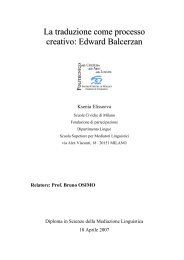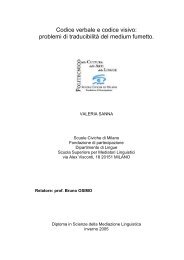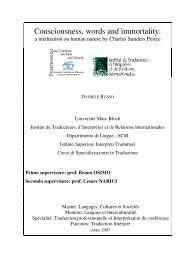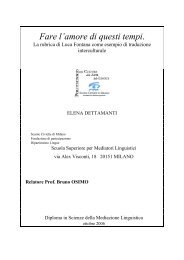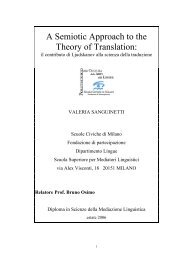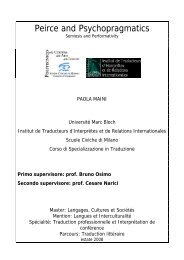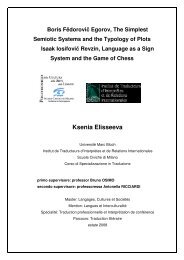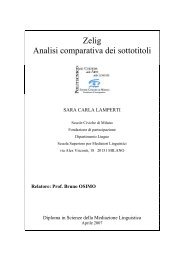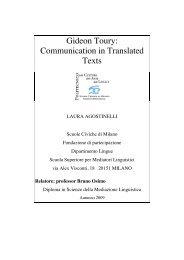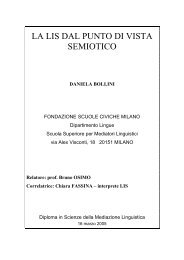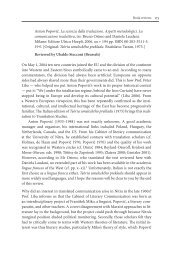Relatore: Professor Bruno OSIMO - Bruno Osimo, traduzioni ...
Relatore: Professor Bruno OSIMO - Bruno Osimo, traduzioni ...
Relatore: Professor Bruno OSIMO - Bruno Osimo, traduzioni ...
Create successful ePaper yourself
Turn your PDF publications into a flip-book with our unique Google optimized e-Paper software.
standards for the design of similar studies. Kings’ extensive study of the<br />
translation process of eight advanced students of French demonstrates the<br />
immense wealth and richness of data that can be obtained by TAP as well as<br />
the necessity to choose among all the possible variables for both the aim and<br />
the analysis.<br />
From the point of view of Translation Studies though, the research has a<br />
drawback: the participants were not involved in translation as a professional<br />
or even potentially professional activity; they were foreign language students<br />
and teachers-in-training and translated their tasks the same way they would<br />
have translated an ordinary assignment in a language class. In fact, the<br />
translation brief specified they should translate in their usual manner.<br />
Thus, the objective of Kings’ study was translating in a pedagogical<br />
context or didactic translation, which is a rather different task than<br />
translation as a professional activity. Nevertheless, the study provided a<br />
number of research questions and categories to apply to analysis as well<br />
as a highly fruitful way to use TAP in the study of the translation process<br />
(Schmidt 2005: 22).<br />
Gerloff published her study in 1988. She investigated and compared the<br />
translation process of three different subject populations: four college students<br />
of French, four bilingual speakers English/French without any experience of<br />
translation, and four professional translators, normally translating from<br />
French into English. The study focused on translation in one direction i.e.<br />
from L2 (French) to L1 (English). Gerloff used essentially the same coding and<br />
classifying categories as Krings. The most important finding is that more<br />
experienced translators (experience here is defined in the context of<br />
translating being an innate ability in bilinguals), such as both the professionals<br />
and the bilinguals in her sample, do not necessarily translate more easily or<br />
faster than the less experienced translators (here defined as the foreign<br />
language students). From that, along with other indicators, she concluded<br />
that experienced translators are more aware of the difficulty of the problems<br />
they find and of their possible solutions; furthermore, they set higher<br />
21



